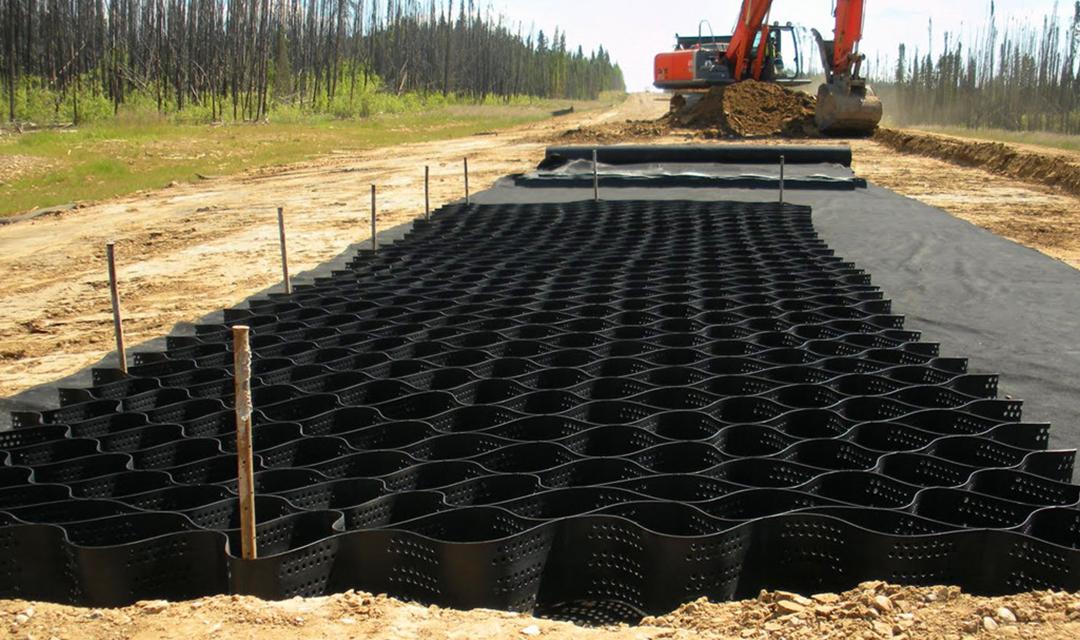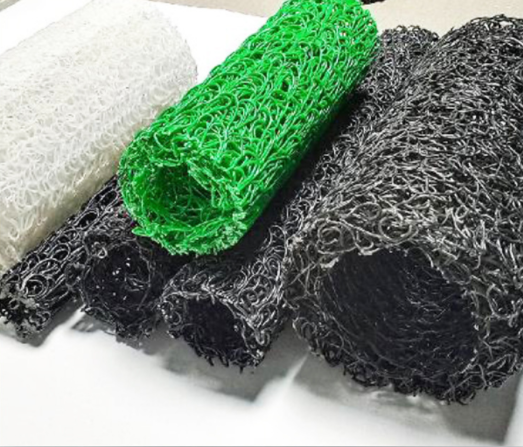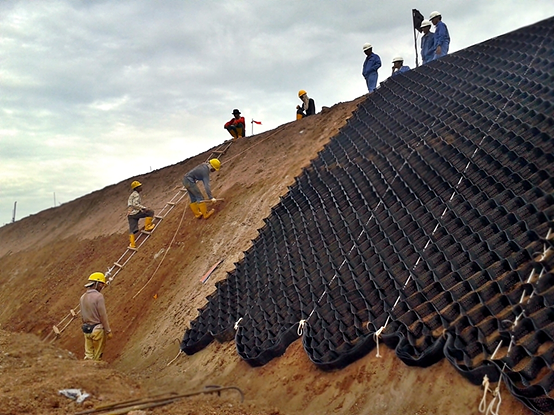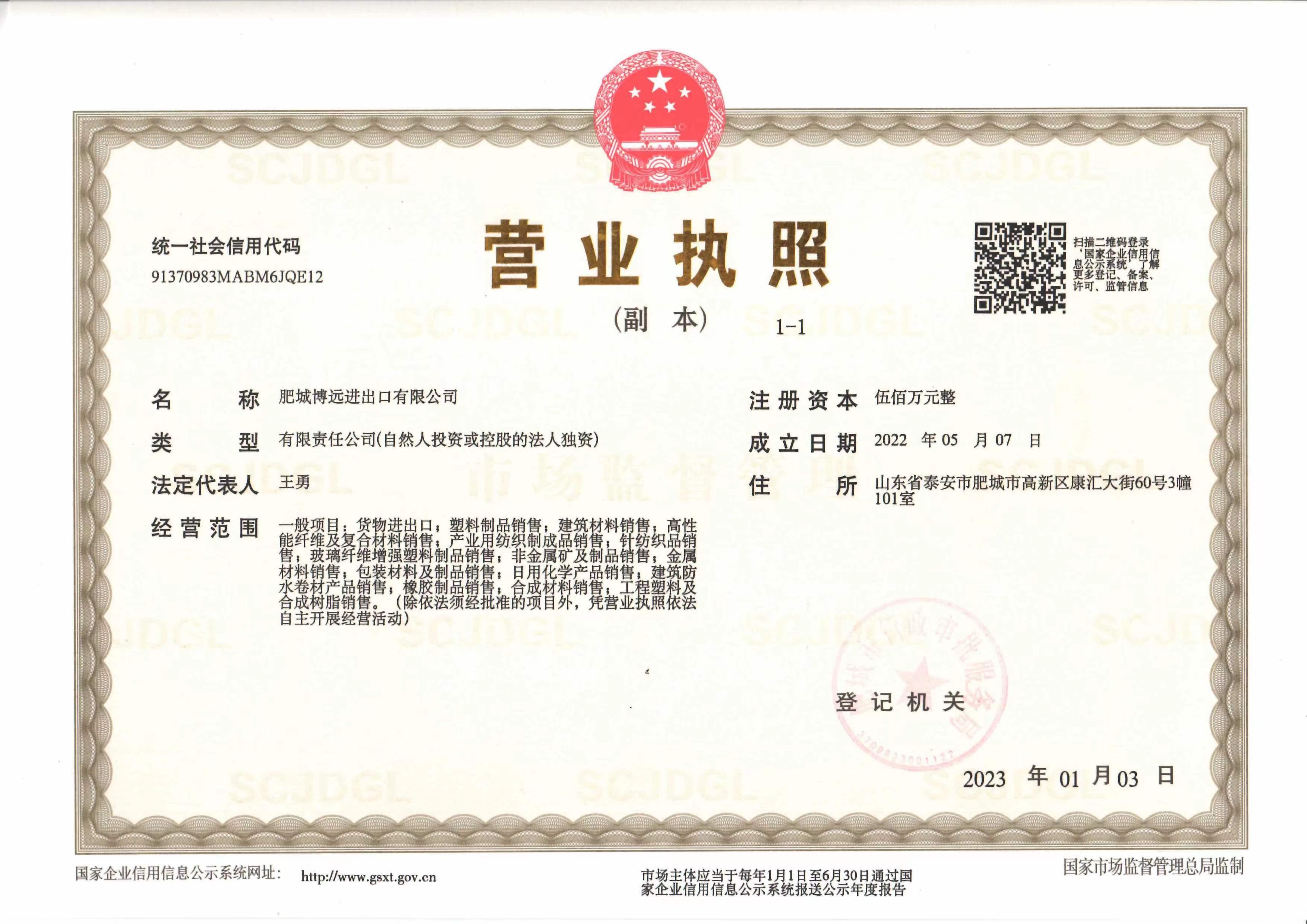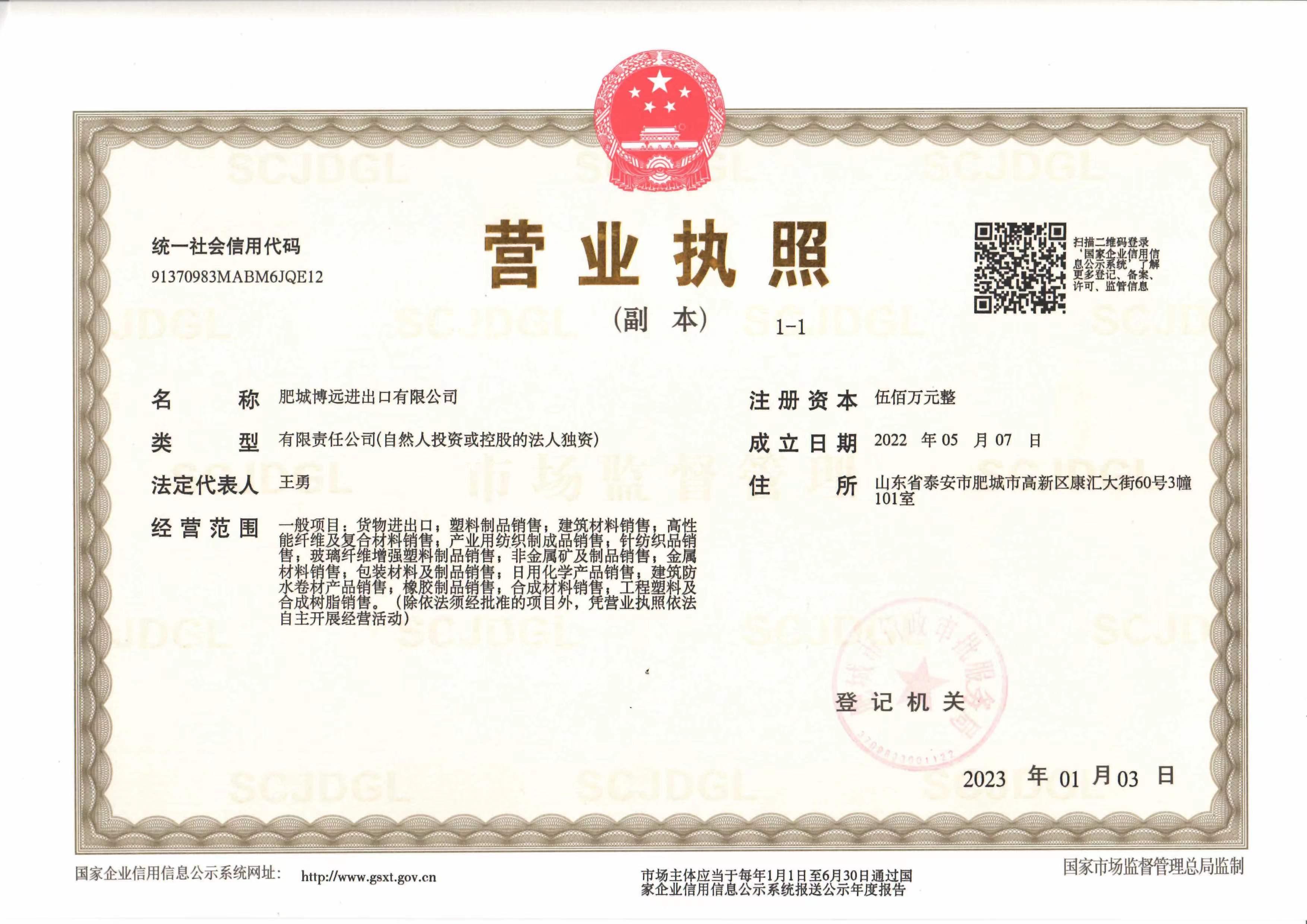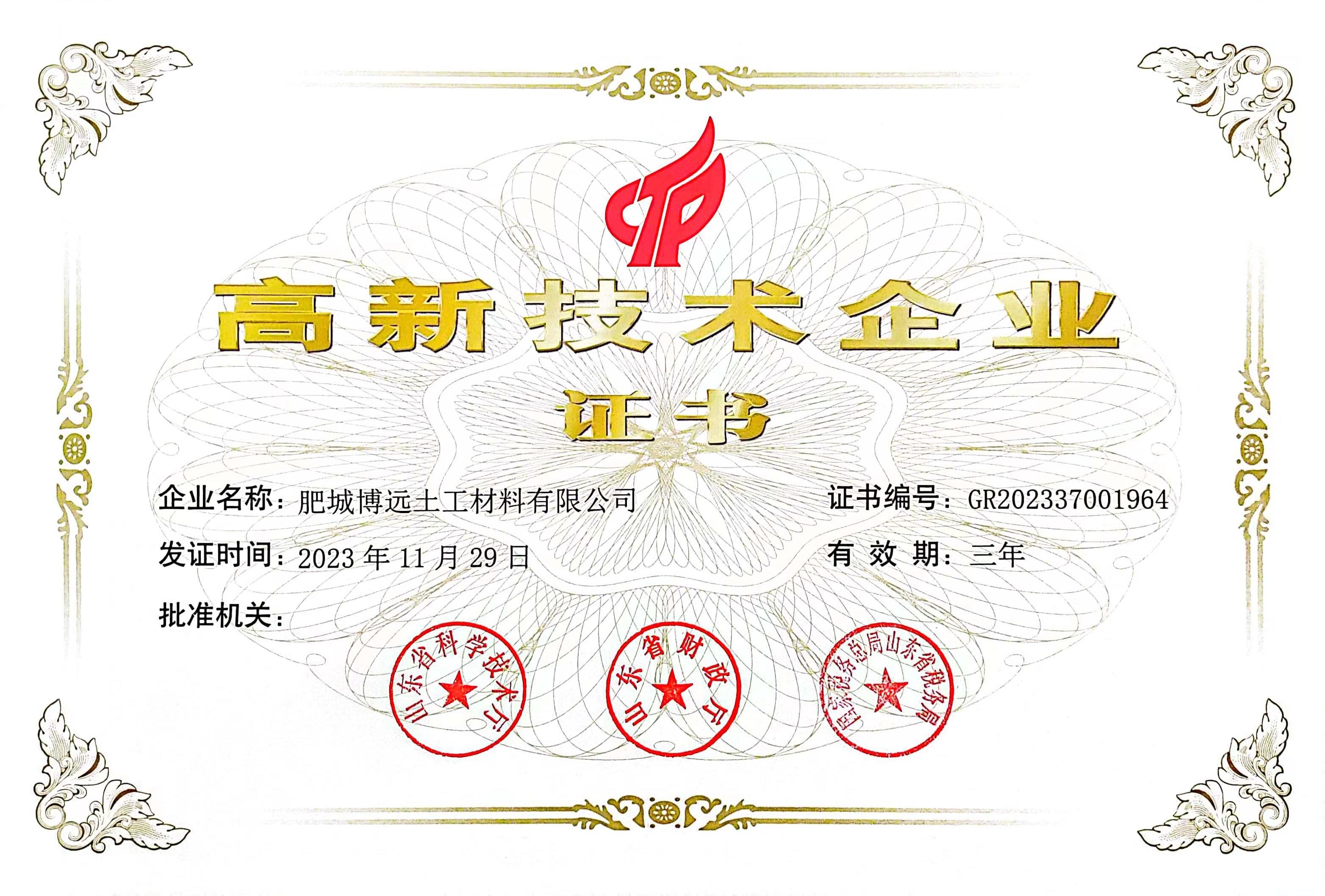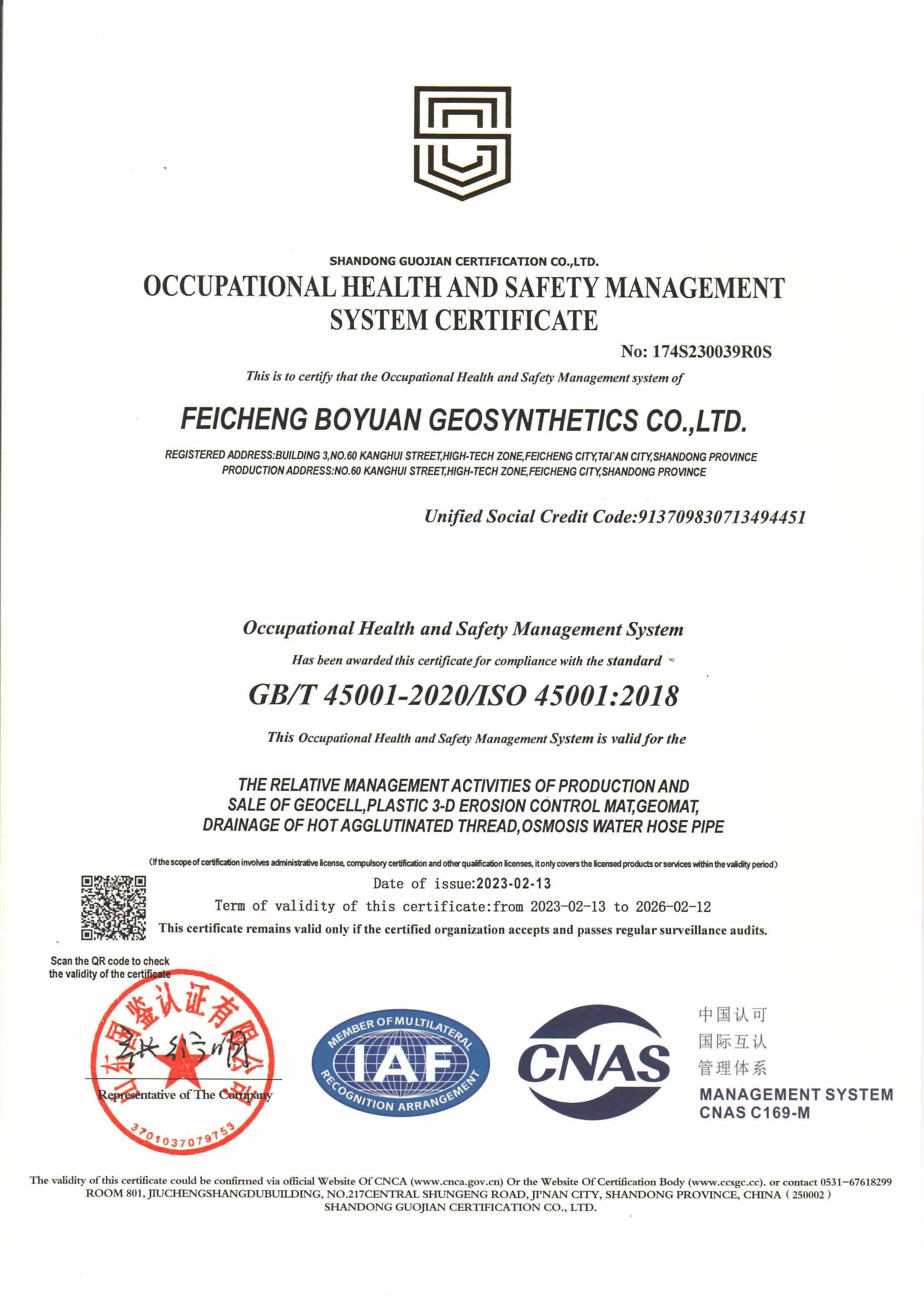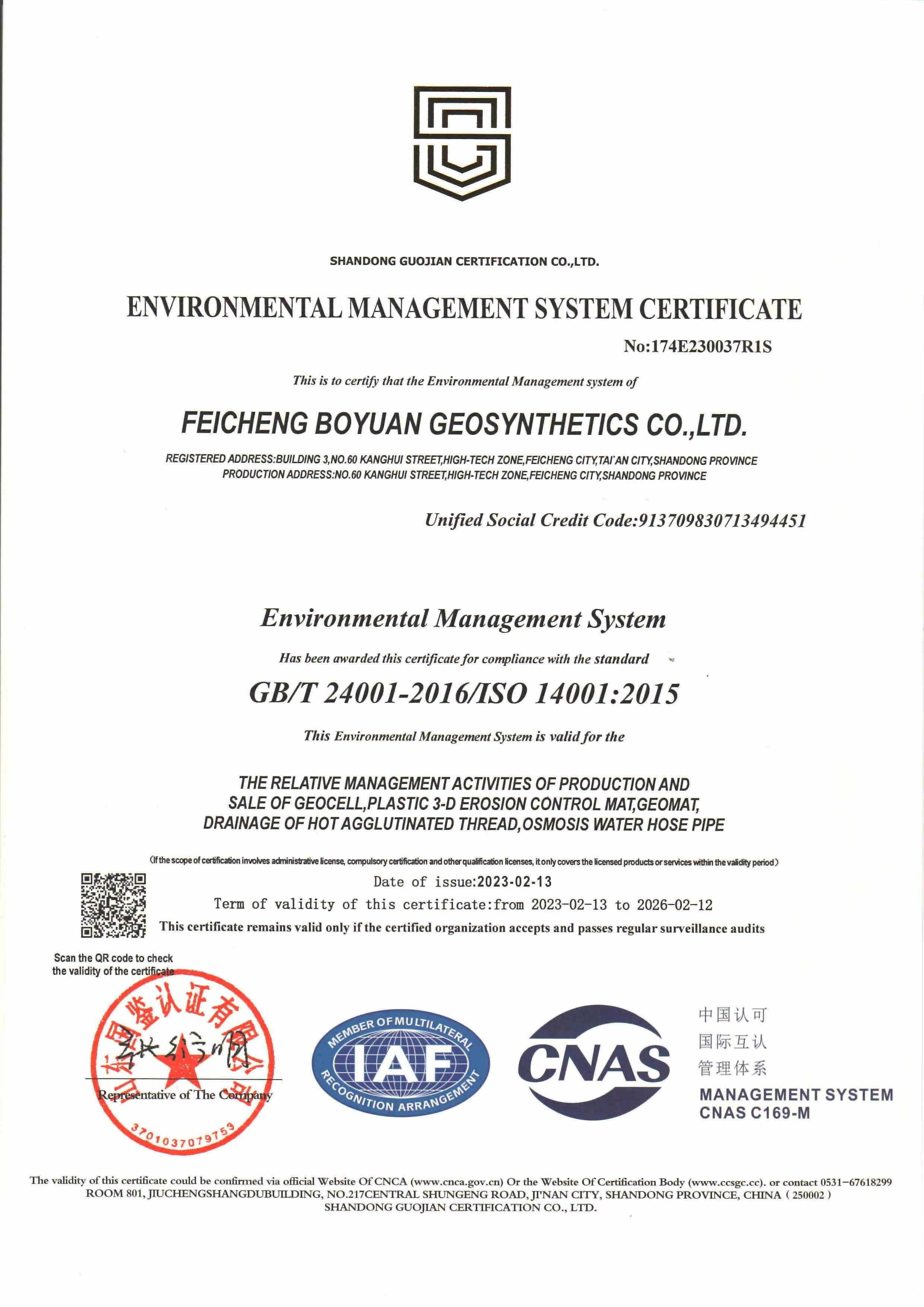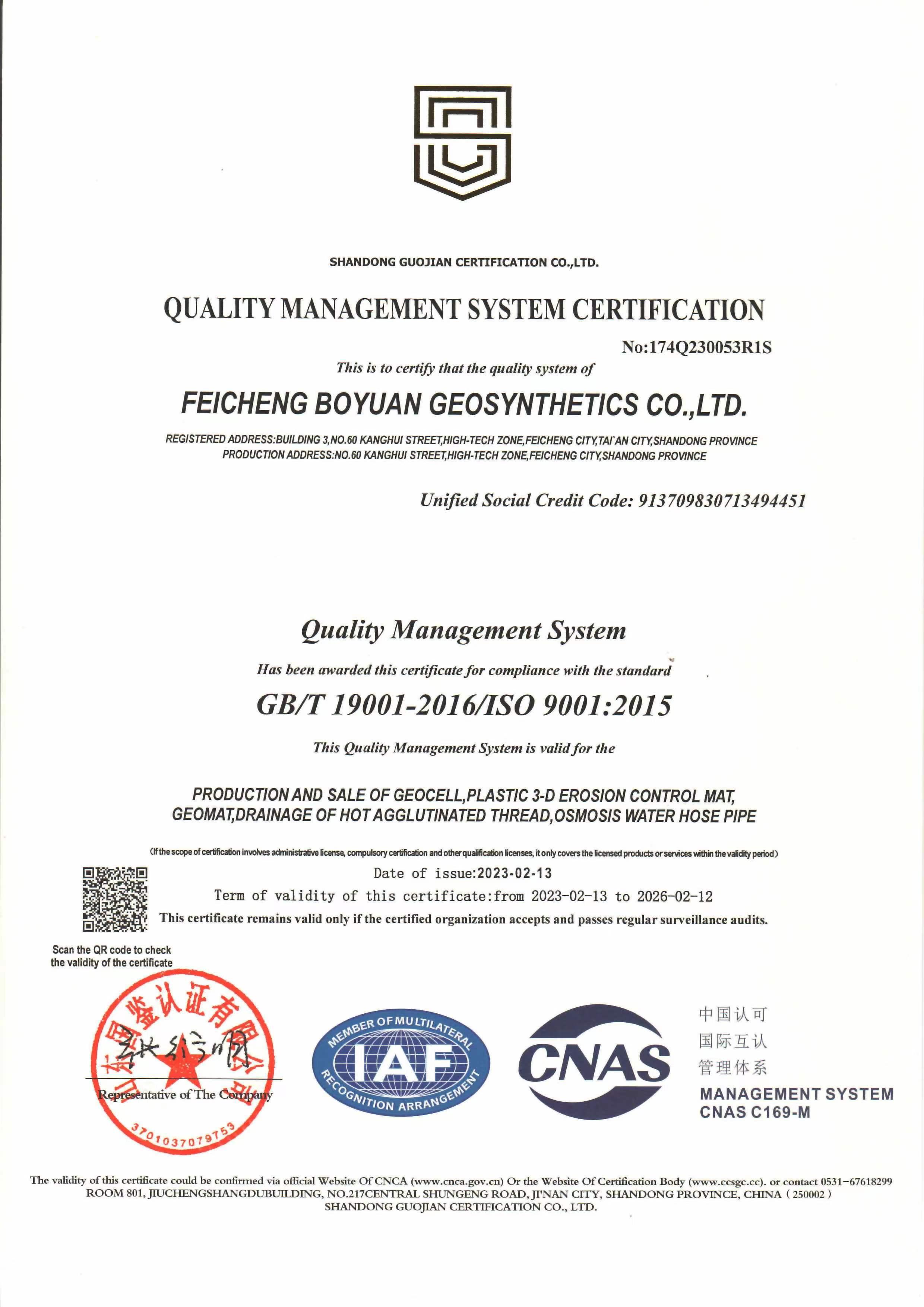Geotextile rolls should be protected from damage prior to installation and deployment. The geotextile rolls should be stacked in a level, watertight area, not exceeding four rolls in height, with the roll identification sheet visible. The geotextile rolls must be covered with an opaque material to protect them from UV degradation. During storage, keep labels intact and information intact.
The geotextile rolls must be protected from damage during transportation, including on-site transportation from where the material is stored to the job site.
Geotextile rolls that have been physically damaged must be repaired. Geotextile that has been subjected to severe abrasion cannot be used. Any geotextile that has come in contact with leaking chemicals is not permitted to be used on this project.
2、The method of laying geotextile.
2.1 Rolling by hand; the cloth surface should be smooth, with proper allowance for deformation.
2.2 The installation of filament or short-wire geotextile usually uses several methods such as lap, stitching and welding. The width of stitching and welding is generally 0.1m or more, and the width of lap is generally 0.2m or more. Geotextiles that may be exposed for long periods of time should be welded or stitched.
2.3 Stitching of geotextiles
All stitches must be continuous (e.g. spot stitching is not allowed). Before overlapping, the geotextile must be overlapped by at least 150 mm. the minimum stitch distance from the woven edge (the exposed edge of the material) is at least 25 mm.
Stitched geotextile seams include the chain stitch method. The thread used for stitching shall be a resin material with a minimum tension of more than 60 N and with chemical and UV resistance equal to or greater than that of the geotextile.
Any "missed stitches" in the sewn geotextile must be re-sewn in the affected area.
Precautions must be taken to avoid soil, particulate matter, or foreign material entering the geotextile layer after installation.
The lap of cloth can be divided into natural lap, sewing or welding according to the terrain and use function.
2.4 In the construction, the geotextile above the geomembrane using natural lap, geotextile above the geomembrane using stitching or hot air welding. Hot air welding is the first filament geotextile connection method, that is, the connection of two pieces of cloth with a hot air gun instant high temperature heating, so that part of it to molten state, and immediately use some external force to make it firmly bonded together. In wet (rain and snow) weather can not be hot bonding, geotextile should take another method a sewing connection method, that is, using special sewing machine for double stitching connection, and the use of chemical ultraviolet resistant sewing thread.
The minimum width is 10cm for stitching, 20cm for natural overlap and 20cm for hot air welding.
2.5 For stitching, use stitches of the same quality as the geotextile, and the stitches should be made of materials that are more resistant to chemical damage and ultraviolet light exposure.
2.6 After the geotextile is laid, the geomembrane is laid after approval by the site supervising engineer.
2.7 Geotextile is laid on the geomembrane after the geomembrane is approved by the Party and the Supervisor as above.
2.8 The geotextile phase celebrations for each layer are numbered TN and BN.
2.9 Both the upper and lower layers of the membrane shall be buried with the geotextile membrane in the anchor
groove where there is an anchor groove.
3、Basic requirements for geotextile laying.
3.1 The joints shall intersect the line of the slope; where balanced with the foot of the slope or where stresses may exist, the distance between horizontal joints shall be greater than 1.5m.
3.2 On the sloping surface, anchor one end of the geotextile, then lower the coil to the sloping surface to ensure that the geotextile remains stretched.
3.3 All geotextile fabric shall be held down with sand bags, which will be used during laying and retained until the top layer of material is laid.
4、 Geotextile laying process requirements
4.1 Grass-roots inspection: check whether the grass-roots level, solid, if there is a foreign body, should be treated properly.
4.2 Test lay: According to the site conditions, determine the size of the geotextile, cut and be test laid, the cutting size should be accurate.
4.3 Check whether the spread width is appropriate, the lap joint should be smooth, loose and moderate.
4.4 Positioning: Use a hot air gun to bond the lap parts of the two pieces of geotextile, the spacing between the bonding points should be appropriate.
4.5 The suture should be straight and the stitches should be even when suturing the lap area.
4.6 After stitching, the geotextile should be checked for smoothness and defects.
4.7 If there are any non-conformities, they shall be repaired promptly.
5、 Self-inspection and repair
1) All geotextile sheets and seams must be inspected. Defective geotextile sheets and seams must be clearly marked on the geotextile and repaired.
2) Wear on the geotextile must be repaired by laying and thermally joining the geotextile patches, which must be at least 200mm longer than the defective edge in all directions, and thermally joining must be strictly controlled to ensure that the geotextile patch is tightly bonded to the geotextile and does not damage the geotextile.
3) Before the end of each day's laying, visually inspect all geotextile surfaces laid that day to make sure that all damage has been marked and immediately repaired and that the surface is free of foreign substances that could cause damage, such as fine needles, small nails, etc.
4) The following technical requirements shall be met for the repair of geotextile damage.
5) Patch material used to fill holes or cracks should be consistent with the geotextile.
6) The patch should extend at least 30 cm beyond the extent of the damaged geotextile.
7) At the bottom of the landfill, if the tear in the geotextile exceeds 10% of the width of the web, the damaged portion shall be removed and the two rolls of geotextile shall be joined; if, on the sloping surface, the tear exceeds 10% of the width of the web, the roll of geotextile shall be removed and replaced with a new roll.
8) Construction workers wearing work shoes and construction equipment used should not damage the geotextile, construction workers shall not do things on the geotextile that have been laid that may harm the geotextile, such as smoking or poking the geotextile with sharp tools.
9) For the safety of the geotextile material, the packaging film should be opened before laying the geotextile, i.e., one roll should be laid and one roll opened. And check the quality of appearance.
10) In particular: geotextile to the site in a timely manner after the acceptance of the visa to recognize the amount.
11) To strictly implement the Company's "Geotextile Construction and Acceptance Regulations".
6、 Matters needing attention in geotextile installation
6.1 Geotextiles shall be cut only with geotextile knives (hook knives) and, if cut on the site, special protection shall be provided for other materials to prevent unnecessary damage to them as a result of the cutting of the geotextile.
6.2 While the geotextile is being laid, all necessary measures shall be taken to prevent damage to the underlying material.
6.3 In laying the geotextile, care must be taken not to allow substances such as stones, large amounts of dust or moisture, which may damage the geotextile, which may block drains or filters, or which may cause difficulty in making subsequent connections, to enter underneath the geotextile or geotextile.
6.4 Upon completion of installation, visually inspect all geotextile surfaces to identify all damaged landowners, mark and repair them, and ensure that the surfacing is free of foreign material that could cause damage, such as broken needles and other foreign matter.
6.5 The connection of geotextiles shall follow the following rules: under normal conditions, there shall be no horizontal connection on the slope (the connection shall follow the contour of the slope without intersecting it), except where repaired.
6.6 Where stitching is used, the stitching shall be of the same or better material as the geotextile and the stitching shall be of chemically ultraviolet resistant material. There shall be a clear colour difference between the suture and the geotextile for ease of inspection.
6.7 Special attention is paid to stitching during installation to ensure that no soil or gravel from the gravel cover enters the middle of the geotextile.
7、 Damage and repair of geotextile
7.1 At the sutured joints, re-suture repairs shall be made and ensure that the ends of skipped stitches are re- sutured.
7.2 In all areas, except on rocky slopes, holes or tears shall be patched with geotextile patches of the same material.
7.3 At the bottom of the landfill, if the length of the gap exceeds 10 per cent of the width of the membrane, the damaged part shall be cut off and the two parts of the geotextile shall be joined together.


